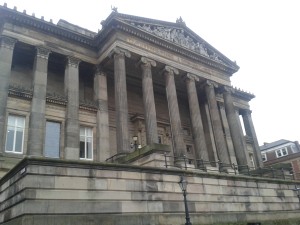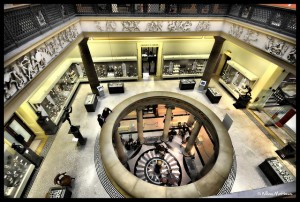Before last week, I had no idea what numismatics was. Turns out, it’s the “study or collection of currency, including coins, tokens, paper money, and related objects” (wiki). And the reason I now know the meaning of the word numismatics is because that is what I’ll be involved in from mid-February to the end of April.
My university started a programme this year where second year History students could apply for a huge amount of placements at heritage sites, museums and art galleries. When I first heard of this scheme as part of my role in the History Careers Focus I was so jealous. I was obviously ignoring the fact that even if the scheme had begun last year I would not have been around to take part!
However, luckily for me and the other 3rd year history students, they decided to open the scheme up to us! I decided to apply for the placement at the Harris Museum and Art Gallery, which is in Preston.
http://www.harrismuseum.org.uk/
I was successful! My application was accepted. Last Wednesday, I and another of the students on the placement went to visit the Harris. Not only were we given a tour of the museum, we also got to meet with Money Matters Project Officer, Matt Ball, who is our lead coordinator for the placement.
First, the Harris is just an amazing building.
And inside is even better!
Image courtesy of thetwohats.co.uk/
As you can see, it’s also big. In fact, you can just see the 3rd floor in the top of this image. After the meeting and tour, the other volunteer and I were given an hour to explore. Yeah, I didn’t even manage to finish exploring ONE of these floors. I love tea and there is a display on porcelain here that is really interesting. Also, there is a section on Preston and I had no idea that Preston holds so many yearly events.
Back to numismatics. The Harris Museum has a collection of 12.5 thousand coins. And ridiculously, the last museum curator spent 8 years not even realising it was there! In the store room of the museum there was a door inside the store room. It took the museum curator 8 years to go “Hmm, I wonder what is behind this door?” She finally opens it to find 12.5 thousand coins. Turns out, the museum started collecting these coins when it first opened in 1893, but the last (and only) time the coins were conserved and labelled was in the 1960s. Also, a lot of the labels are wrong.
The conservator in charge of the coin collection, Matt, has re-packed, correctly labeled, and added to the online database all the Roman coins. This was about 400 coins. 400 out of 12.5 thousand. He also used some of these to make a display called ‘Money Matters’, which talks about how after the Romans left, we Brits liked to trim the bits of silver off their coins, melt them, and then try and pass them off as Roman coins. A couple of students from University of Central Lancashire (UCLAN) also did placements at the Harris and were in charge of the British and Chinese coin collections. Still got a long way to go before all 12.5 thousand are sorted (yes, you can tell I’m still overwhelmed by that number. How could they be lost for 40 odd years!?).
This is where the other Lancaster University students and I come in. We are going to be in charge of doing the same thing for the French, German, and Russian coins. This will probably be what we spend most of our time on. We had a browse while we were there, and some of the French coins are really pretty.
We also have the change to create our own display, which will remain in the museum even after we leave! Awesome. I’ll say more on that later when we actually start putting it together.
As a sort of final ending to our placement, Matt asked us if we would like to give an hour long talk at a conference. The talk will be to museum curators and staff and it’ll be about how they can incorporate numismatics into their displays. I think this will be a really great way to sum up our placement at the Harris. Hopefully by then I’ll know enough about numismatics to talk about it for an hour!
Click here for more information on the Harris’ coin collection.

